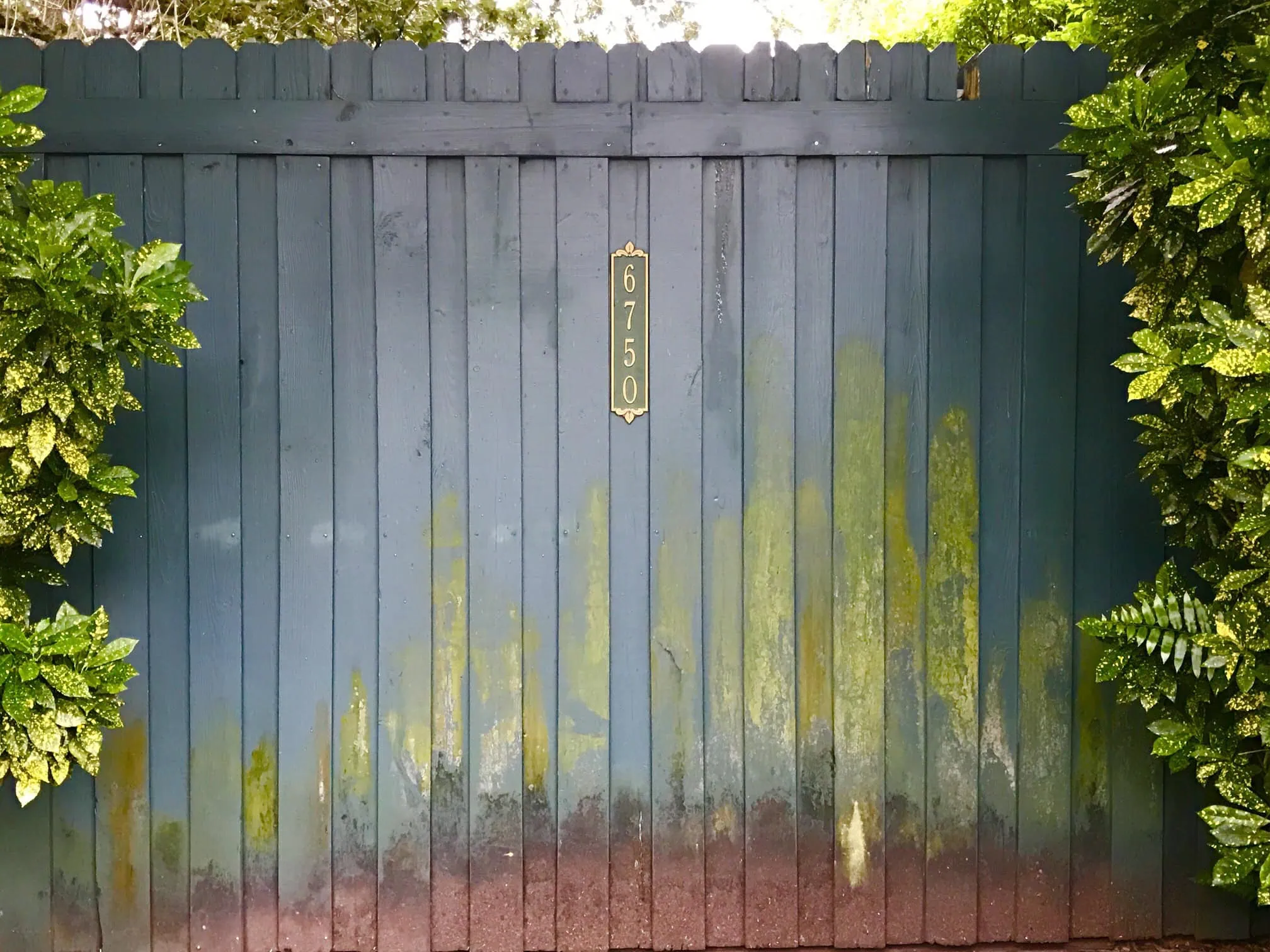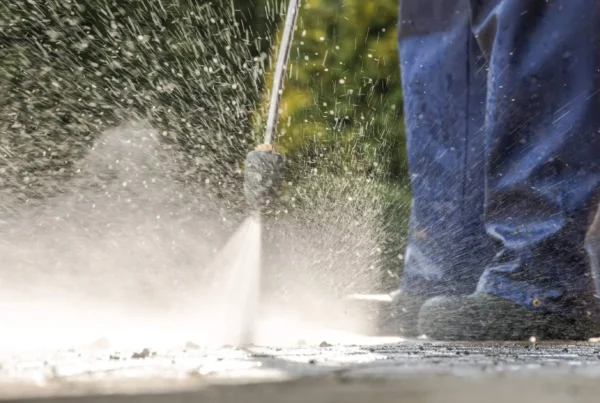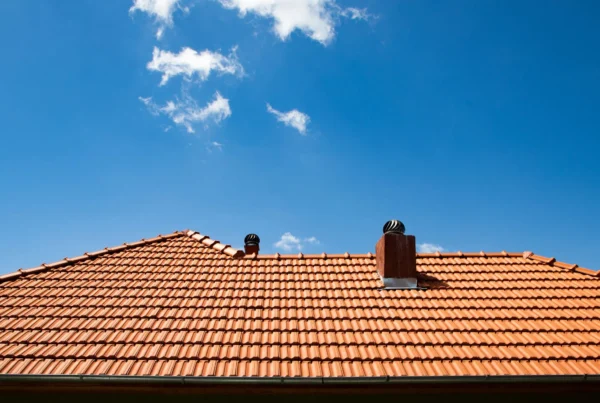To clean green algae, moss, or mildew off a fence, spray affected areas with a vinegar-water solution or eco-safe cleaner, let it sit, scrub gently with a soft brush, and rinse thoroughly. Avoid harsh pressure washing on wood, and prevent regrowth by sealing the surface and improving sunlight and airflow.
You walk outside one morning, coffee in hand, and there it is: the green fuzz creeping across your fence like it owns the place. Whether it’s algae, mould, moss, or mildew, it always seems to appear out of nowhere — and once it sets in, it clings on like it pays rent.
So what’s the deal with green fences? And how do you clean them without damaging the wood, wasting your weekend, or nuking your garden with chemicals?
This guide covers everything you need to know — from understanding why fences turn green in the first place to the safest, most effective ways to get rid of it (and stop it from coming back).
Key Takeaways:
- Use vinegar, baking soda, or oxygen bleach depending on severity
- Scrub gently and rinse well – especially on wood
- Avoid harsh pressure washing on soft or aged timber
- Trim plants, improve airflow, and seal wood to prevent regrowth
- If it’s widespread or keeps returning, consider calling a local pro
Why Fences Turn Green (And It’s Not Just the Rain)
Green growth on fences isn’t just a sign of damp weather — it’s a sign that your fence is holding onto moisture long enough for organic life to thrive.
Here’s what really causes it:
- Poor sunlight exposure: Fences shaded by trees or buildings stay damp longer. That’s ideal for algae and mildew.
- Lack of airflow: Still air keeps surfaces wetter, longer.
- Build-up of organic matter: Dust, pollen, and even spiderwebs can trap moisture and give algae a base to grow.
- Untreated or weathered wood: Bare wood absorbs water more easily and gives green growth something to feed on.
Think of your fence like a sponge — when it stays soaked, things start growing.
Is Green Algae Harmful to Your Fence?
In short: yes, eventually.
While a bit of green discolouration isn’t dangerous on day one, over time it can:
- Break down wood fibres — especially if it’s moss or mould, which trap moisture inside
- Stain the surface — even pressure washing won’t always lift it later
- Accelerate rot — especially on older or untreated timber
- Trigger allergies — if the spores start spreading into the air
The longer you leave it, the deeper it roots in. The sooner you clean it, the easier the job.
How to Clean Green off Fence Safely: Tools, Surface Checks & Prep Tips
Before you spray anything or grab the nearest wire brush, take a second to figure out what you’re dealing with — and what tools will do the job without wrecking your fence.
Assess the Surface:
- Wood? Painted? Vinyl? Composite?
- Is the green flaky (mould)? Slimy (algae)? Fuzzy (moss)? Dry and crusty (lichen)?
Must-Have Tools:
- Garden hose or pressure washer (low setting)
- Soft or medium-bristle brush
- Bucket and sprayer
- Gloves and safety glasses
Optional but helpful:
- Tarp or sheet to protect nearby plants
- Protective mask (especially for mould)
If you’re not sure what the green stuff is, treat a small patch first. Better safe than sorry.
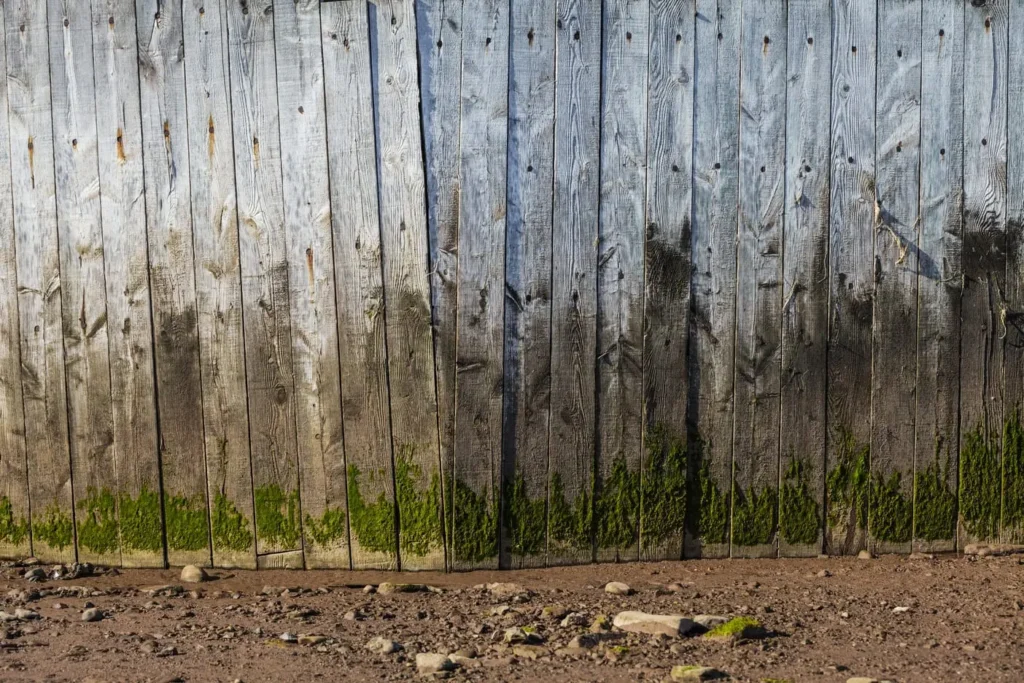
Natural, Eco-Friendly Fence Cleaning Options
You don’t need bleach to win the green war — especially if you’ve got pets, kids, or a flower bed nearby.
DIY Solutions:
- Vinegar + water (1:1): Spray, soak 30 minutes, scrub, rinse
- Baking soda paste: Mix with water, apply to problem spots, brush after 15–30 min
- Lemon juice + salt: Great on small stains and sunny days
- Boiling water: Works for small moss patches (just mind your toes)
Always rinse well with clean water after cleaning — especially if you’re working on wood.
When You Need Chemicals (And How to Use Them Right)
Sometimes the green wins a few rounds — especially if your fence hasn’t been cleaned in years. That’s when chemical cleaners come in.
Look for:
- Mould & algae removers (labelled for fences/exterior wood)
- Oxygen bleach (safer than chlorine, but still strong)
- Pre-mixed fence cleaners from garden or hardware stores
Important:
- Wear gloves and eye protection
- Test a small spot first
- Avoid spraying on windy days
- Rinse thoroughly afterwards
Never mix chemicals. Ever. Vinegar and bleach, for example, release toxic gas.
Cleaning Techniques That Actually Work
Light Growth:
- Spray with vinegar mix
- Let it sit 30–60 minutes
- Scrub with brush
- Rinse thoroughly
Medium to Heavy Growth:
- Use algae cleaner or oxygen bleach
- Scrub thoroughly
- Pressure wash on low setting, moving consistently
Old, Stubborn Stains:
- Spot-treat with stronger solution
- Use a fence brush or plastic scraper (not metal)
- Consider sanding if surface is rough
Don’t overdo it with pressure washing — it can shred soft wood like pine or cedar.
How to Clean Green off Fence by Material: Wood, Vinyl, Composite
| Fence Type | Cleaning Tips |
|---|---|
| Wood (Untreated) | Use soft brushes and natural solutions first. Avoid over-saturating. |
| Painted Wood | Test all solutions first to avoid peeling paint. Hand scrubbing is safer. |
| Vinyl / PVC | Gentle pressure washing works well. Use non-abrasive solutions. |
| Composite | Avoid harsh chemicals. Use soft brushes and diluted vinegar mixes. |
Keeping the Green Away for Good
- Trim back overhanging trees or bushes to let in sunlight
- Seal or stain wood fences once clean — it repels moisture and growth
- Wash down your fence once per season — even just with water
- Improve drainage around the base to stop splash-back and pooling
- Keep debris off the base — don’t let leaves and soil pile up
While this guide focuses on cleaning, it’s worth noting: a fence should ideally be treated after cleaning — with a wood sealer, stain, or preservative — to protect the timber long term and help prevent future green growth.
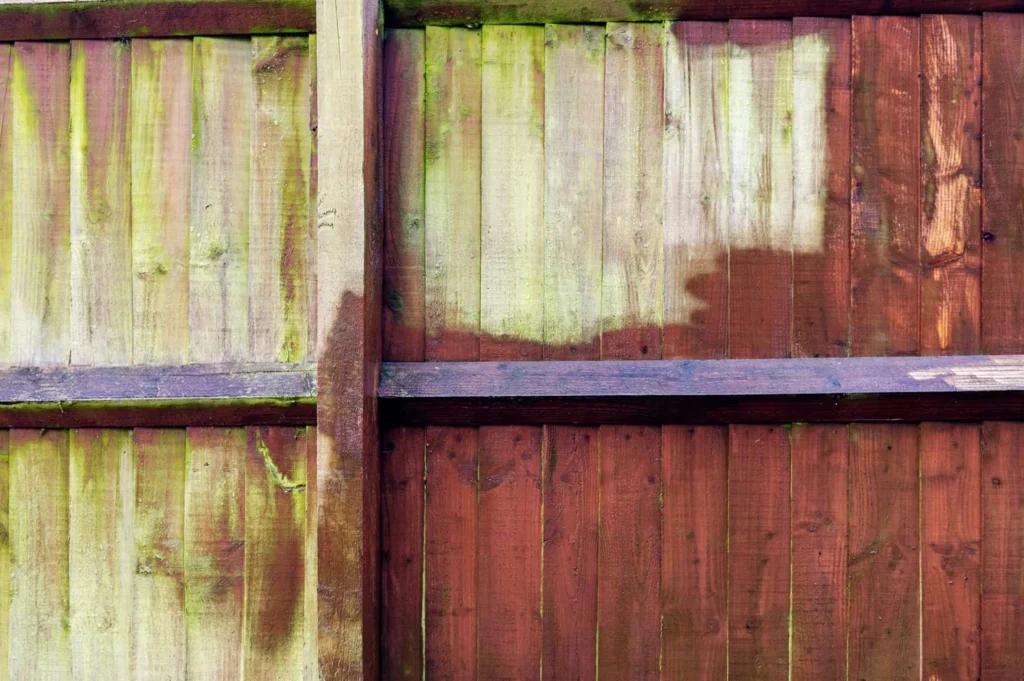
Seasonal Fence Care (That Isn’t a Chore)
- Spring: Clean off any winter mildew or algae buildup
- Summer: Rinse fence during dry spells if plants are nearby
- Autumn: Remove fallen leaves that trap moisture at the base
- Winter: Check fence stability and drainage to avoid cold-weather damage
A clean fence lasts longer, looks better, and costs less to replace.
When It’s Time to Call a Pro
If the fence is massive, deeply stained, or dangerously close to crumbling — it might be time to let the professionals take over.
Call a pro if:
- Green growth returns quickly even after cleaning
- You see signs of structural damage or deep rot
- You don’t have the tools or time for safe removal
- The fence is high, fragile, or attached to complex landscaping
Pros (like Cardiff Window Cleaner Ltd..) can clean, treat, and sometimes even reseal the fence — saving you days of trial and error.
How to Clean Green off a Fence — And Make It Stay Gone
Cleaning green off your fence is about protecting your investment, your safety, and your space. Do it right, and you’ll have a cleaner view, a stronger fence, and a yard that feels properly cared for.
If you’re short on time, tools, or just want the job done professionally — Cardiff Window Cleaner Ltd offers expert fence cleaning services across Cardiff & South Wales.
✅ Safe, effective treatments for all fence types
✅ Eco-friendly options available
✅ No-pressure quotes and flexible bookings
Contact our team today and bring your fence back to life — without lifting a finger.

